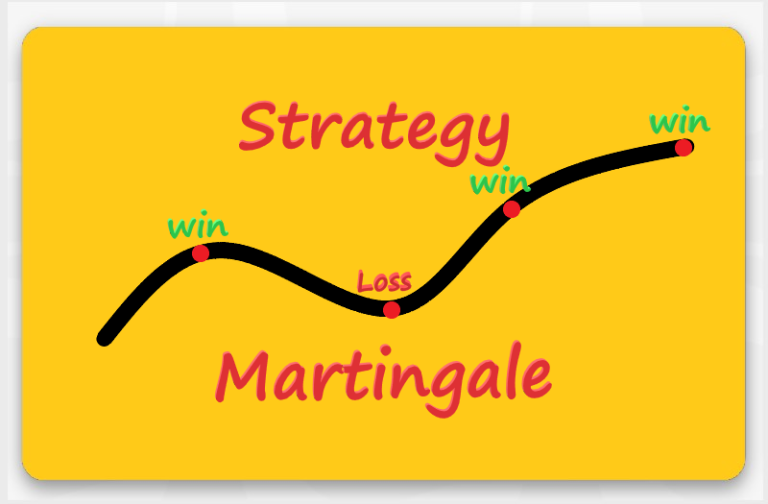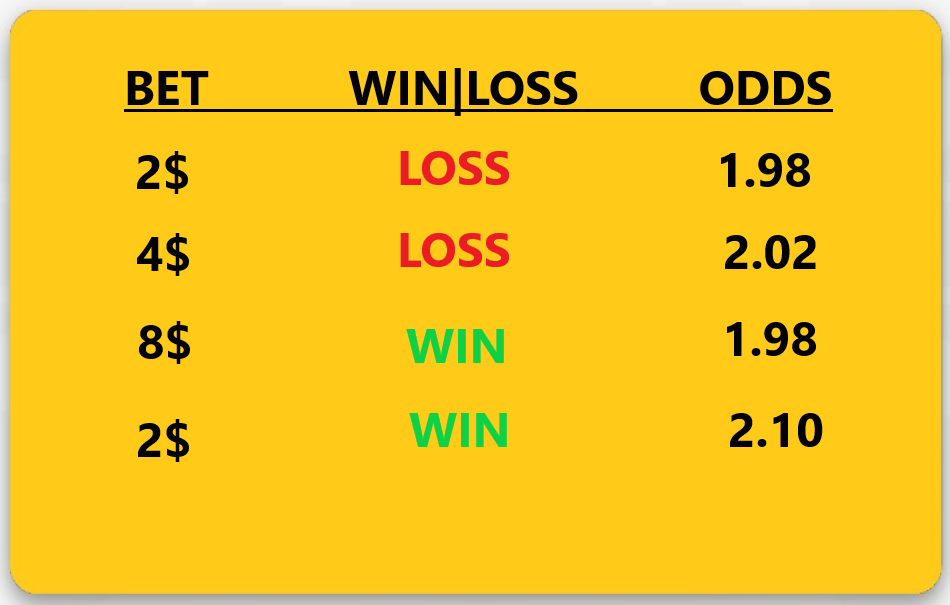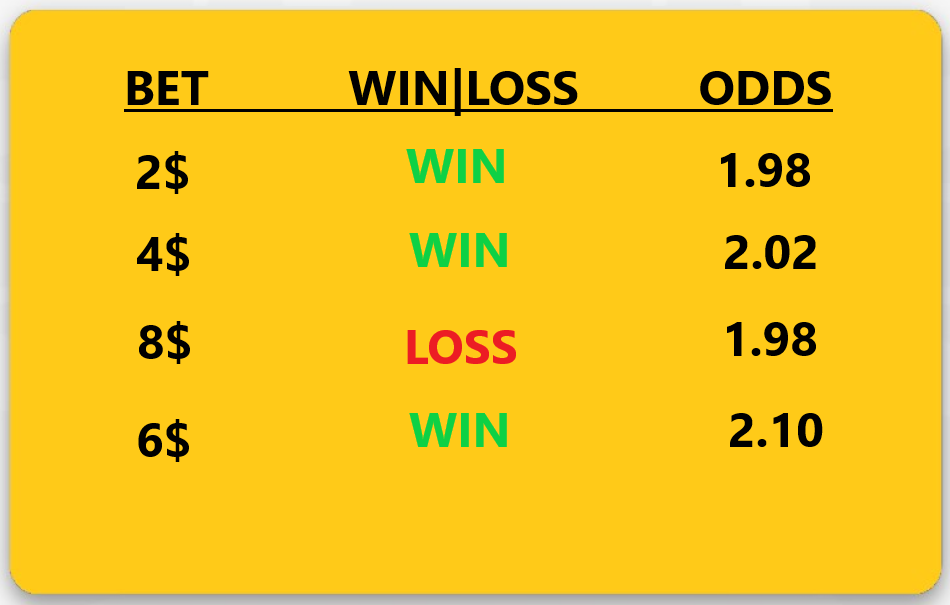
The Martingale system is a famous betting strategy that gamblers have employed for millennia to boost their odds of winning. The system is focused on doubling your wager after each loss to finally recoup all past losses and generate a profit. This article will explain the Martingale system and provide advice on how to apply it effectively while betting on casino games such as blackjack and roulette. This guide will help you understand the Martingale method and make informed judgments about when and how to utilize it, regardless of your gambling experience.
What is a Martingale Betting System?
The Martingale betting system has been employed by gamblers for ages.
The system is predicated on the notion that by doubling your wager after each loss, you would eventually recoup all past losses and turn a profit.
The Martingale approach is frequently employed in casino games such as roulette and blackjack, but it may be applied to any sort of wagering in which the player is wagering on an event with a 50/50 chance of occurring.
The Martingale system is based on the premise that a player will ultimately win a wager, at which point he or she will recoup all prior losses and generate a profit equal to the initial wager. The theory holds that if a player doubles his wager after each loss, he will eventually have a winning streak and recover all past losses. For instance, if a player begins with a $1 wager and loses, they will increase their wager to $2. If they continue to lose, their next wager will be $4, and so on. Once a player wins a wager, they return to their initial $1 wager and begin the process again.

After winning, the player must return to the original bet size
Nevertheless, the Martingale system has significant disadvantages. The requirement of a sizable bankroll for success is one of the major challenges. As the player doubles their stake after each defeat, the potential for loss can soon become significant. In addition, the majority of casinos have a maximum bet limit, which prevents players from doubling their wager after a loss.
In addition, the Martingale strategy does not account for the house advantage.
The house edge is the casino’s inherent advantage over the player, and it exists in all casino games. Even if the player can recoup their losses and make a profit, it will likely be less than if they had not employed the Martingale strategy.
Overall, the Martingale bet system has been widely utilized by gamblers for generations. It is centered on doubling your wager after each loss to finally recoup all past losses and turn a profit. However, it demands a high bankroll and disregards the house advantage, making it a hazardous approach that is not always successful. It is essential to keep in mind that the Martingale system is not the only betting system accessible, and it is essential to understand the dangers associated before attempting it.
Martingale Sports Betting Formula
The Martingale formula for sports betting is a mathematical formula that estimates the next wager based on the previous wager and its outcome. The Martingale system’s fundamental formula is as follows:
Bet Amount = Previous Bet x 2
This formula is applied following every losing wager. Therefore, if a bettor begins with a basic wager of $10 and loses, their next wager will be $20 (10 x 2 = $20). If they lose again, their next wager will be $40 ($20 x 2 = $40).
Therefore is crucial to note that this formula does not account for the chances or probability of the bet winning, and it can lead to enormous bet quantities that could cause the player to run out of money or exceed a bookmaker’s betting limit.
How does the Martingale Betting Strategy Work?
The Martingale betting system is a popular approach based on the principle of raising your wager after each loss to recoup all past losses and create a profit. By doubling your stake after each loss, you will eventually experience a winning run and repay all prior losses.
In games with a 50/50 chance of winning, such as roulette or coin tosses, the Martingale approach assumes that the player would eventually win a bet. And when they do, they will recoup all past losses and earn a profit equal to the size of their initial wager.

It is important that the odds of potential winnings be within 2.0
Beginning with a little wager, such as $10, the method is implemented. If the player loses their initial wager, they will place a wager equal to two times their initial wager on the next game. If they lose again, their next wager will be four times more than their last wager, and so on. The procedure continues until a player wins a wager. When a player wins a wager, they return to the $10 basic stake and begin the process again.
This method is based on the probability principle that the probability of losing consecutively is less than the probability of winning.
It’s important to remember that no matter what system you choose, betting should be about controlling risk and not chasing losses, therefore it’s crucial to have a thorough understanding of the game you’re betting on, the odds, and a bankroll management strategy. The Martingale strategy is a high-risk strategy that should be employed with prudence and not as a definite method of winning.
How to Use the Martingale Betting System in Betting
The Martingale betting strategy is also applicable to sports wagering. The underlying idea is the same as that of casino games: after each loss, the bettor doubles their amount to finally recoup all past losses and make a profit.
Here is the Martingale sports betting system formula:
- Begin with a small first wager, such as $10.
- If the bettor loses their initial wager, they will place a $20 wager on the subsequent game.
- If they continue to lose, their next wager will be $40, and so on.
- After each loss, the bettor will continue to double their wager until they eventually win.
Once a wager is won, the bettor will return to the initial $10 base bet and begin the procedure again.
Notably, the Martingale system is not advised for sports betting because the odds in sports betting are not 50/50, but are more likely to be around 55/45. In addition, sports betting frequently involves long losing streaks, which can result in a player running out of money. In addition to causing overvaluation of specific teams, the Martingale method could cause the player to lose more money over time.
The Martingale betting system has been employed by gamblers for ages. By way of illustration, consider the game of roulette:
Martingale Betting System Example
A player’s initial stake is $10 on the color red.
If the player loses and the ball lands on black for the next round, they will wager $20 on red.
If they lose again and the ball falls on black, they will wager $40 on red on their next roll.
After each defeat, the player doubles their wager until they ultimately win.
Suppose the player loses five consecutive hands and their bet is now $160. On the sixth turn, the ball lands on red, resulting in the player’s victory.
They recover their prior losses of $10 + $20 + $40 + $80 + $160 = $310 and earn a profit of $10. (the original base bet)
Importantly, the gambler in this scenario had sufficient cash to continue doubling their wagers after each loss and finally experience a winning streak. However, this is not always the case, and players may run out of money before achieving a sequence of wins. In addition, the majority of casinos have a maximum bet restriction that prevents players from doubling their wager following a loss.
It is also essential to remember that roulette, like other casino games, is a game of chance whose outcome is determined by chance. A betting method such as Martingale might raise the danger of losing more money, thus it is essential to utilize it with prudence and have a plan for managing your bankroll.
Martingale System Variations
The Martingale method is a well-known betting system, although modifications have been created over time. Here are several variants of the Martingale system:
Reverse Martingale: This version, sometimes known as the “anti-Martingale” strategy, includes raising your wager after a victory rather than after a loss. Instead of attempting to recoup losses, the premise behind this variant is that a player will take advantage of a winning run by raising their wagers.
This version involves not just doubling your wager following a loss, but also incorporating an additional unit.
For instance, if a player begins with a $10 basic wager and loses, their next wager would be $30 (10 x 2 + 10).
This modification raises both the possible compensation and the chance of losing more money.
This version is based on the Fibonacci sequence, in which each number equals the sum of the two previous numbers. After each failure, the wager is increased according to the Fibonacci sequence in this approach. For instance, if a player begins with a $10 base bet and loses, their next wager would be $10 + $10 = $20. If they lose again, the next wager will be $20 plus $10, or $30.
This form of the Martingale system includes raising or lowering bets by a set amount following a win or loss. In contrast to the traditional Martingale, the D’Alembert method is predicated on the notion that a player is more likely to win after a loss and less likely to win after a victory; therefore, bets are modified.
You should keep in mind that all variants of the Martingale method should be utilized with caution.
Before attempting any of these strategies, you must have a thorough grasp of the game you are betting on, the odds, and a bankroll management strategy. In addition, it is essential to keep in mind that these strategies do not guarantee victory, and it is essential to comprehend the dangers associated before using them.
Is it worth using the Martingale System in Betting?
The Martingale method is a well-known betting strategy, although its usefulness relies on an individual’s preferences and risk aversion. Consider the following factors when deciding if the Martingale betting strategy is worthwhile:
The Martingale system is a high-risk strategy that necessitates a huge bankroll to be successful. As the player doubles their stake after each defeat, the potential losses can soon get considerable. However, if a player can recoup their losses and make a profit, the potential reward is substantial.
House Edge: The Martingale approach does not account for the casino’s inherent advantage over the player, the house edge. Even if the player can recoup their losses and make a profit, it will likely be less than if they had not employed the Martingale strategy.
Maximum Bet Limit: The majority of casinos have a maximum bet limit, which prevents players from doubling their wager after a loss. This can diminish the Martingale system’s efficacy.
The Martingale system is predicated on the chance that losing a particular number of times in a row is less likely than winning. In the long term, however, the chances of winning and losing are equal, thus the Martingale strategy is not a foolproof way to win.
Consider the following merits and downsides of the Martingale system:
Pros and Cons of the Martingale System
The Martingale system is built on the basic premise of doubling your stake after each loss, which makes it simple to learn and apply
The Martingale system is predicated on the assumption that by doubling your stake after each loss, you will ultimately have a winning streak and repay all past losses
The Martingale approach may be applied to any form of wager when the chances are approximately equal
The Martingale system is a risky strategy that needs a substantial bankroll to be successful. As the player doubles their stake after each defeat, the potential losses can soon get considerable
The Martingale approach does not account for the casino's inherent advantage over the player, known as the house edge. Even if the player can recoup their losses and make a profit, it will likely be less than if they had not employed the Martingale strategy
The majority of casinos have a maximum bet restriction, which might prohibit players from doubling their wager after a loss, so reducing the efficiency of the Martingale strategy
The Martingale approach is based on probability, however, it is not a foolproof strategy to win because it does not consider the odds or the chance of the bet winning
Long losing streaks: the Martingale strategy may result in long losing streaks that can bankrupt a player. This might make it challenging for players to recover their losses and turn a profit
FAQ
As long as the player adheres to the bookmaker's terms and conditions and does not violate any laws, bookmakers often do not prohibit the use of the Martingale strategy.
No, the Martingale method is not unlawful. It is a betting method based on mathematics and probability. However, it is essential to be informed of any gambling rules or restrictions in your country and to bet responsibly at all times.
The Martingale betting strategy applies to all forms of gambling, including football wagers. It is essential to remember, however, that football betting sometimes entails extended losing streaks that might cause a gambler to run out of money. In addition, sports betting sometimes contains more variables than casino games, so it's crucial to have a thorough grasp of the sport and teams you're wagering on.
The Martingale system is based on probability, but it does not guarantee success. This strategy demands a substantial bankroll and disregards the house advantage. Before adopting the Martingale betting method, it is essential to understand the associated risks and have a bankroll management strategy in place.
Martingale is a mathematical formula and is not prohibited. However, it is crucial to be informed of any gambling rules or restrictions in your country and to bet responsibly at all times. Additionally, it is essential to stick to the terms and conditions of the bookies and casinos you use. Noting that the use of any betting strategy does not guarantee a victory is crucial, as is understanding the risks involved before attempting it.
Last updated on 28 Feb 2023 - 21:36


